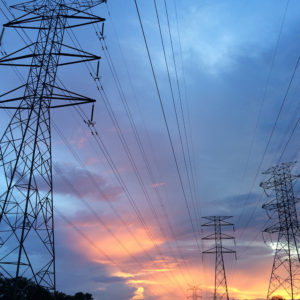California’s failure to control wildfires isn’t just a rural problem
Facing longer dry seasons and hotter weather, California has experienced 18 of its 20 largest wildfires since 2000.[1] And while most urban dwellers have escaped the fires’ immediate wrath, they cannot escape its consequences.
For one thing, wildfires have a significant impact on our air quality. The small particulates generated by wildfires can cause heart attacks, strokes, pre-term births, lung cancer and asthma attacks.[2] Indeed, the top five urban regions in the U.S. for year-round particulate pollution are all in California, including San Jose-San Francisco-Oakland and Los Angeles-Long Beach.[3]
“Smoke days” have increased 230 percent in Los Angeles and 400 percent in San Jose.[4] And a recent study found that California’s 2020 wildfires emitted 120 times more small particulate matter than all of the state’s vehiclesgenerated in 2020, likely causing 1,200-3,000 excess deaths.[5]
California’s wildfires have also increased homeowners’ insurance premiums – an unsurprising consequence considering that claims from the 2017 and 2018 wildfires alone cost insurance companies a combined $29 billion in claims.
Additionally, the rising risk of wildfires has required more frequent power shutoffs by utility companies to avoid triggering more fires. There have been 67 power shutoffs from 2013 through 2021, affecting over 3.6 million customers.[6]
Finally, wildfires reduce the role that California’s forests play as a “sink” to sequester carbon emissions from the atmosphere and have likely neutralized the benefits of California’s carbon reduction policies. For instance, one study found that the fires in 2018 released more than nine times the emissions than had been reduced in 2017.[7]Thus, even if wildfires are not coming to a home near yours, their impact is grave. To tame these infernos that threaten homes and health, here are some of the actions that the state needs to take.
Thinning Forests.
California has approximately 15 million acres of unhealthy forests that require some form of treatment. Although 10 million acres lie on federal lands, 5 million acres are subject to California’s control.
Crowded forests, filled with dead timber, brush, and young, tightly spaced trees, serve as “ladder fuels” that carry flames to the trees’ canopies that exponentially spread.[8] According to Gary Ferguson, an acclaimed nature and science author, thinning unhealthy forests reduces fire intensity by reducing the number of young, tightly spaced trees, which are flammable.[9] It also reduces competition among the trees for water and allows more rain to reach the ground.[10]
Thinning can be accomplished with (1) prescribed burns (which reduce the buildup of dead or diseased trees, dry grass, and withered shrubs that ignite fires); (2) state crews that can accomplish the same thing; or (3) timber companies when subject to clear contractual constraints.
Prescribed burns and thinning work.
Prescribed burns slowed the advance of the California Rim Fire in 2013, saving homes.[11] The Christmas Valley neighborhood in Tahoe survived the 2021 Caldor Fire in part because previous tree-thinning efforts had eliminated limbs and ladder fuels.[12] Still, although the California Governor’s Office acknowledged in 2021 that prescribed burns are a “well-recognized” and “cost-effective” tool to reduce “fuel buildup in forests,[13] only a small percentage of California’s budget is allocated to thinning and prescribed burns.
In September 2021, a group of experts, led by former Gov. Jerry Brown and former CAL FIRE Director Ken Pimlott, issued the “Venado Declaration.” It proposed spending $5 billion annually on better forest management, including “proactive fuels reduction,” and a modification of state and federal laws to address “the current crisis.”[14]
Yet, four months later, Gov. Gavin Newsom’s budget proposal only budgeted $600 million annually for wildfire resilience in budget years 2022-2023 and 2023-2024.[15]
Given that California’s estimated budget surplus has exploded since January 2022 to $97.5 billion,[16] the state should have taken advantage of this windfall to deposit a significant portion of that sum into a multi-year fund dedicated to forest resilience. It didn’t.
With such sustained funding, the state could have been in a position to aggressively constrain the wildfire risk in California. Instead, California has been slow in committing even its existing funding to forest resilience. As of January 2022, 93 percent of the $988 million provided in 2021-22 had not been committed.[17]
Thus, even with its available funding, California continues to fiddle while it burns. In an aspirational strategic plan announced in March 2022, California proposed to deploy prescribed burns to thin only 400,000 acres of forest annually by 2025.[18]
Our state needs to act, not merely announce a strategy. And if state agencies cannot get the job done, the state could expand the number of acres that are thinned annually by authorizing commercial timber harvesting of tightly spaced, flammable young trees (which can be used to create cross-laminated lumber utilized for floors, roofing, walls, decks and more). In fact, CAL FIRE’s Forest Carbon Plan acknowledges that “sustainable commercial timber harvest” could help achieve forest health goals.[19]
But there is a problem. California no longer has the number of lumber mills to process such timber, nor the number of biomass plants to make electricity out of the trees and brush that need to be removed from forests.[20] While 140 mills operated in California in the 1980s, fewer than 30 mills remain.[21] The U.S. Forest Service itself has complained about the lack of mills and plants.[22]
If California is to have the assistance of private enterprise to accelerate the thinning of forests (thereby saving them from destruction), the state will need to provide tax credits to incentivize the construction of lumber mills. After all, effectively regulated timber companies are not the enemy: The 2021 Dixie Fire alone burned more timber – 1.6 billion board feet – than the state’s mills processed in a year.[23]
Hardening Homes.
The state must also offer tax credits to encourage homeowners in wildland-urban interfaces to upgrade their homes with fire resistant materials in order to arrest the spread of wildfires. Arresting the spread of wildfires assists the entire community, not only the prudent homeowner. Hardening helps. The Sierra-at-Tahoe Resort, which the Caldor Fire damaged in 2021, protected most of its buildings by coating structures with a fire-retardant gel.
Strengthening Our Energy Infrastructure.

With nearly 40,000 miles of bare power lines in areas having a greater wildfire risk,[24] utility power lines have caused at least eight of the 20 most destructive fires in California’s history, six of which occurred since 2015.[25]
To address this growing risk, California utilities have turned to proactively turning off power during severe weather conditions – at a considerable cost to its customers.[26] The state must do more to reduce the need for these power outages.
First, with the state’s assistance and direction, the utilities must harden their bare power lines in high fire-risk areas. They can accomplish this by covering the power lines with a plastic covering that insulates them, or by burying the power lines underground. Yet, of the nearly 40,000 miles of bare power lines in areas of heightened wildfire risk, utilities reported hardening only 1,540 miles of lines in 2020.[27] This is not surprising. Estimates range from $2.6 million to $3 million per mile of power line placed underground.[28]
But since the state’s expensive climate mandates have diverted some of the utilities’ resources that could have gone to strengthen their energy infrastructure, and the state simultaneously regulates their spending, the state should help finance and accelerate this hardening effort.
Second, utilities can reduce the wildfire risk by removing vegetation and tree branches around power lines. The California State Auditor found that contact with vegetation accounted for 74 percent of all acres burned from wildfires caused by electrical equipment.[29] But with Pacific Gas & Electric’s vegetation management plans envisioning completion in over a decade,[30] the state needs to accelerate this process.
Finally, the state should correct its error in separating its oversight of the safety of the power grid from its regulation of the associated cost. The California Public Utilities Commission approves utilities’ spending plans upon which their rates are charged. But effective July 1, 2021, the state transferred the PUC’s wildfire safety division to a new office under the auspices of another agency. That Office of Energy Infrastructure Safety had only 30 employees as of January 2022,[31] and is neither equipped to properly oversee utilities’ wildfire mitigation plans nor responsible for the financing of those plans.
Unless California wants to exist in a permanent state of emergency, it needs to implement effective action to mitigate the ongoing wildfire emergency. To quote Abraham Lincoln, while “(t)he occasion is piled high with difficulty,” as “our case is new, so we must think anew, and act anew.”[32]
Daniel M. Kolkey, an attorney, is a former associate justice of the California Court of Appeal, former counsel to California Gov. Pete Wilson, and a member of PRI’s board of directors.
[1] Cal Fire, “Top 20 Largest California Wildfires,” https://www.fire.ca.gov/media/4jandlhh/top20_acres.pdf.
[2] Brianna Taylor, “Sacramento among California cities with filthiest air in the US, new study says. What to know, Sacramento Bee, April 22, 2022; California Legislative Analyst’s Office, “The 2021-22 Budget: Wildfire Resilience Package,” Feb. 5, 2021, p. 4; Venado Declaration, p. 1, https://www.documentcloud.org/documents/21100767-venado-declaration.
[3] American Lung Association, “State of the Air Report,” https://www.lung.org/research/sota/key-findings/year-round-particle-pollution.
[4] Farida Jhabvala Romero, “Dangerous Air. As California Burns, America Breathes Toxic Smoke,” https://www.kqed.org/news/11890211/dangerous-air-as-california-burns-america-breathes-toxic-smoke.
[5] Kat Kerlin, “California’s 2020 Wildfire Season: Report Summarizes Record-Breaking Fire Year and Calls for Shift in Strategy,” UC Davis (May 4, 2022), p. 6, https://www.ucdavis.edu/climate/news/californias-2020-wildfire-season-numbers.
[6] California State Auditor Report 2021-117, March 2022, pp. 1-2, https://www.auditor.ca.gov/pdfs/reports/2021-117.pdf.
[7] Report of Beacon Economics for the Next 10 think tank, https://parma.com/california-wildfires-threat-progress-cutting-greenhouse-gases.
[8] Legislative Analyst’s Office, “The 2020-2021 Budget: Governor’s Wildfire-Related Proposals,” p. 9; Gary Ferguson, Land on Fire (Timber Press 2017), p. 158.
[9] Gary Ferguson, Land on Fire (Timber Press 2017), p. 158. Crystal Kolden, a UC Merced fire scientist, asserts that most wildfire scientists agree that some form of forest thinning improves safety by reducing the risk of a fire turning into a catastrophe. Dale Kasler, “’Fuel for the next Fire.’ Why California can’t unload the trees that worsen its fires,” Sacramento Bee, Dec. 19, 2021.
[10] Gary Ferguson, Land on Fire, p. 158.
[11] Ibid, p. 165.
[12] Dale Kasler and Jason Pohl, “’It was a firefight.’ How a vulnerable Tahoe neighborhood was saved from the Caldor Fire,” Sacramento Bee, Sept. 12, 2021, https://www.sacbee.com/news/california/fires/article254003398.html.
[13] Governor’s Office, California’s Wildfire and Forest Resilience Action Plan, January 2021, p. 18, https://www.fire.ca.gov/media/ps4p2vck/californiawildfireandforestresilienceactionplan.pdf.
[14] Venado Declaration, p. 2, https://www.documentcloud.org/documents/21100767-venado-declaration.
[15] Legislative Analyst’s Office, “The 2022-23 Budget: Wildfire and Forest Resilience Package,” January, 2022, p. 1, https://lao.ca.gov/Publications/Report/4495.
[16] Legislative Analyst’s Office, “The 2022-23 Budget: Initial Comments on the Governor’s May Revision,” May 2022, p. 1, https://lao.ca.gov/reports/2022/4598/Initial-Comments-May-Revision-051622.pdf.
[17] Legislative Analyst’s Office, “The 2022-23 Budget: Wildfire and Forest Resilience Package,” January 2022, p. 7, https://lao.ca.gov/Publications/Report/4495.
[18] California Wildfire & Forest Resilience Task Force, “California’s Strategic Plan for Expanding the Use of Beneficial Fire,” March 2022, p. 18, https://fmtf.fire.ca.gov/media/wmnj23l2/californias-strategic-plan-for-expanding-the-use-of-beneficial-fire.pdf.
[19] CAL FIRE, California Natural Resources Agency, and California Environmental Protection Agency, “California Forest Carbon Plan: Managing our Forest Landscapes in a Changing Climate,” May 2018, p. 2, https://vdocuments.net/california-forest-carbon-plan-california-forest-carbon-plan-managing-our.html.
[20] Dale Kasler, “’Fuel for the next fire.’ Why California can’t unload the trees that worsen its fires,” Sacramento Bee, Dec. 19, 2021, https://www.sacbee.com/news/california/fires/article256107187.html.
[21] Ibid.
[22] Ibid.
[23] Ibid.
[24] California State Auditor Report 2021-117, March 2022, pp. 1, 17.
[25] Legislative Analyst’s Office, “The 2020-21 Budget: Governor’s Wildfire-Related Proposals,” Feb. 21, 2020, https://lao.ca.gov/Publications/Report/4172, and California State Auditor Report 2021-117, March 2022, p. 1., https://auditor.ca.gov/reports/2021-117/index.html
[26] California State Auditor Report 2021-117, March 2022, p. 14-15.
[27] California State Auditor Report 2021-117, March 2022, p. 1, 26.
[28] California State Auditor Report 2021-117, March 2022, p. 25.
[29] California State Auditor Report 2021-117, March 2022, p. 23.
[30] California State Auditor Report 2021-117, March 2022, p. 23.
[31] California State Auditor Report 2021-117, dated March 2022, pp. 11-12.
[32] Lincoln’s Second Annual Message to Congress, Dec.1, 1862.


